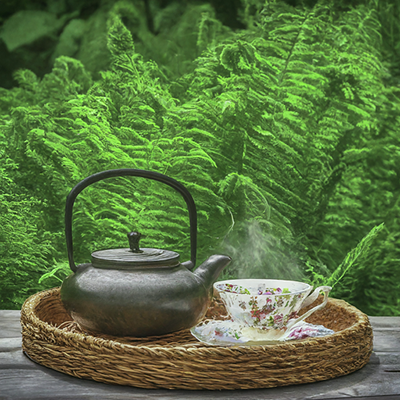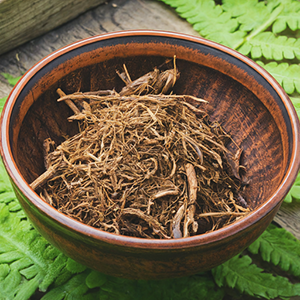Contents
Both Dioscorides and Theophrastus were aware of female fern benefits and laxative properties. In the 16th century, Andrés de Laguna, a Spanish physician, said, “the female fern purges quite easily; thus, it does not upset the stomach, nor it provokes boredom.” According to an old tradition, this physician recommended that people suffering from constipation drink broth made with an old sock stuffed with female fern root and tinevelly senna.

Female Fern Scientific Facts
- Scientific Name: Polypodium vulgare L.
- Other Names: Polypody.
- French: Polypode.
- Spanish: Polipodio.
- Environment: It is common in all warm northern hemisphere areas and usually grows on old tree trunks, shady walls, and moss-covered rocks.
- Description: A fern of the Polypodiaceae family, it is 15 to 50 cm high and has elongated, triangular fronds, with the spores placed on the underside. The rhizome (underground stem) is creeping, with many little roots growing. The calaguala is another fern of the same genus, Polypodium.
- Parts of the plant used medicinally: The rhizome.
Female Fern Benefits

The root of the female fern contains a glycosidic component, saponin, mucilage, and sugars. It has a pleasant licorice flavor. Its applications are the following.

- Mild laxative and cholagogue: The female fern is recommended for chronic constipation, hepatic insufficiency or congestion, and gall bladder disorders.
- Expectorant and antitussive: It is advantageous for bronchial catarrh and dry cough.
- Vermifuge: It helps the expulsion of intestinal parasites.
How to use Female Fern
- Infusion with 30 grams of root per liter of water, boiling until it reduces to half. Steep for some hours, then drink three or four cups daily.
- Root powder: The recommended dose is one gram, up to three times daily.
DISCLAIMER: All content on this website is presented solely for educational and informational objectives. Do not rely on the information provided as a replacement for advice, diagnosis, or treatment from a qualified medical expert. If you are pregnant, nursing, or have any preexisting medical concerns, talk to your doctor before using any herbal or natural medicines.
REFERENCES
- George D. Pamplona-Roger, M.D. “Encyclopedia of Medicinal Plants.” George D. Pamplona-Roger, M.D. Encyclopedia of Medicinal Plants. Ed. Francesc X. Gelabert. Vols. 1 San Fernando de Henares: Editorial Safeliz, 2000. 392. Print. [female fern benefits]
- ScienceDirect: https://www.sciencedirect.com/
- Google Scholar: https://scholar.google.com/
- National Center for Complementary and Integrative Health (NCCIH): https://www.nccih.nih.gov/
